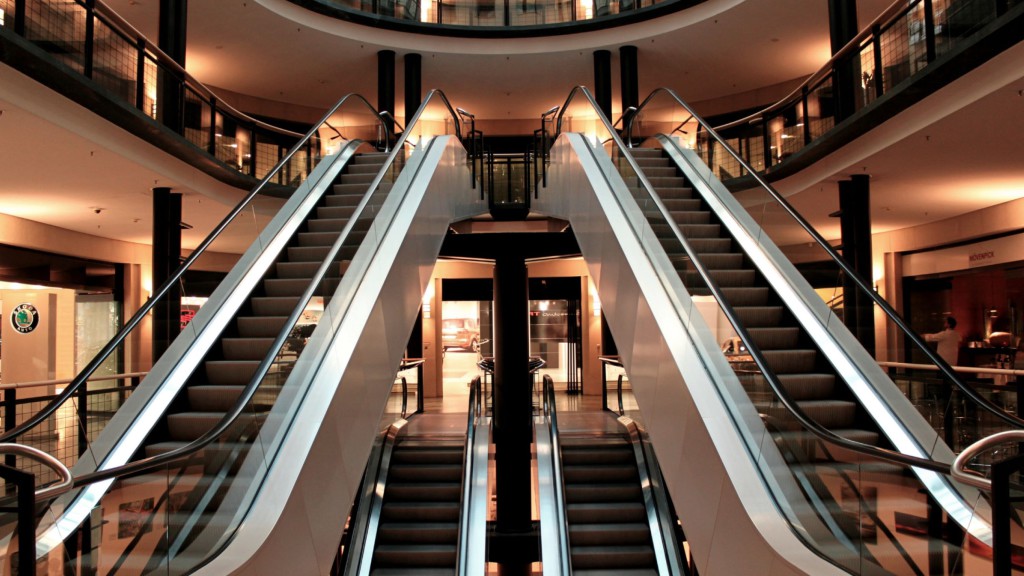Smarter, healthier building management

Claire Robinson, Sales Director at IAconnects, highlights the importance of active monitoring in smart buildings.
Ever heard of The Edge? No, not the lead guitarist from U2. I mean Deloitte’s Amsterdam
headquarters, which houses over 28,000 Internet of Things (IoT) sensors that monitor everything from temperature to lighting. From data dashboards to automated coffee makers, this building has it all. Like many smart buildings, The Edge benefits greatly from active monitoring, which gives building managers extra visibility.
As the UK continues its march towards Net Zero carbon emissions, companies approach environmentalism and efficiency differently. While some produce packaging using sustainable materials, the Deloittes and IBMs of the world are investing in shiny, new smart buildings.
The built environment is no stranger to digital transformation, but smart buildings take thingsto the next level. The term ‘smart building’ is more than a technological buzzword. It’s a new wave of digitisation. These facilities use intelligence to collect actionable data from user devices, systems, sensors and various services on-site.
It’s easy to see how this data can improve efficiency and sustainability efforts. For example, facilities managers can use this information to root out energy-draining areas or improve use of space. However, capturing these insights means investing in active monitoring solutions that track performance of relevant metrics.
The importance of being active
Traditionally, passive monitoring involved using periodic assessments and manual checks to gauge building performance. Today, facilities managers have better tools at their disposal. Sensors, gateways and other IoT-enabled devices can provide a constant flow of information. This means that issues like poor air quality and inefficient waste can be identified and addressed as they occur, not after they’ve already caused problems.
By bringing modern sensors and IoT technology into smart buildings, facility managers can start making data-driven decisions. These devices collect and transmit data on everything from indoor air quality (IAQ) and carbon emissions to occupancy levels, allowing building management systems (BMS) to adjust settings dynamically. Take this example: a smart heating, ventilation and air conditioning (HVAC) system can detect a rise in CO2 levels and automatically increase ventilation in response. In so doing, it ensures optimal air quality without consuming unnecessary energy.
As regulatory standards tighten, active monitoring will become more important in smart facilities. For example, the Streamlined Energy and Carbon Reporting (SECR) requires large UK companies to share energy use and carbon information in annual reports. Meanwhile, The Energy Savings Opportunity Scheme (ESOS) mandates energy audits and carbon reporting for large organisations. In both cases, active monitoring can help facilities managers capture and process the required data.
Indoor air quality
Understandably, IAQ is a key concern in many smart buildings. Research suggests that poor air quality can reduce productivity by up to 10%. This, combined with the higher rate of sick days seen in environments with poor air quality, is estimated to cost the global economy over £178 billion annually. Meanwhile, poor IAQ is linked to health issues such as respiratory problems, headaches, fatigue and reduced cognitive function.
Smart buildings equipped with active monitoring systems can track air quality in real-time, identifying issues before they escalate into serious health concerns. Many of these facilities are now equipped with sensors that continuously measure pollutants such as carbon dioxide (CO2), volatile organic compounds (VOCs) and fine particulate matter (PM2.5).
These pollutants can accumulate due to inadequate ventilation, high occupancy levels or emissions from equipment. By tracking these levels in real-time, facilities managers can ensure that air quality remains within safe thresholds, creating a healthier environment for occupants.

Tracking energy and carbon
Energy use and carbon emissions are both important considerations for smart buildings. In many businesses, it can be hard to understand where energy is being wasted, which eventually leads to excessive costs and carbon emissions. Meanwhile, as mentioned, the SECR and ESOS are also adding urgency here.
Smart meters, sensors and IoT-driven analytics can all help. This intelligent hardware and software can detect inefficiencies like unnecessary lighting and outdated equipment consuming excess power. Using this information, building and facilities managers can make informed decisions, like whether to adjust heating and cooling schedules based on occupancy patterns or install automated lighting controls.
Active monitoring is more about lowering monthly bills, it can also help organisations reduce their carbon footprint and meet energy targets. In smart buildings, this technology can help facilities managers capture a baseline and understand their current situation and what needs to change.
Tracking water
Similarly, water quality monitoring can provide smart buildings with the data required to validate compliance, ensuring that they meet the required criteria.
Under The Water Supply (Water Quality) Regulations 2018, the drinking water supplied in commercial facilities must meet legal quality standards. This includes a requirement for regular monitoring testing for contaminants, such as the bacteria legionella.
Once again, IoT and AI platforms have made the process easier for facilities managers by helping them capture key data points, including cold and hot water temperature, water stagnation detection and the impact of disinfection measures.
Occupancy monitoring
Often, companies treat occupancy tracking as an afterthought, but it can be incredibly valuable. Effective monitoring can help facilities managers optimise space utilisation, reduce costs and enhance overall employee experience. Remember The Edge? It accommodates around 2,850 employees across 1,080 desks. By tracking how the office space is used, Deloitte could ensure that workstations, meeting rooms and common areas are allocated effectively.
This seems like a no-brainer. Occupancy tracking can prevent overcrowding while avoiding waste in different areas – heating, air conditioning and the like. However, it’s reasonable to expect staff concerns, with some feeling like it’s overpolicing. Therefore, businesses should reassure staff by implementing privacy-protecting measures, like collecting data anonymously.
The Edge is just one of countless smart buildings that are popping up globally and using intelligent technology to control various environmental parameters. Active monitoring is crucial in these facilities because it provides building and facilities managers with crucial performance data, giving them the insights needed to help them make the right decisions







